9 Oldest Libraries in the World – Oldest.org
Libraries are centers of knowledge and learning around the world. They are home to all of the world’s works and other forms of media, including films, CDs, videotapes, DVDs, Blu-ray Discs, maps, e-books, audiobooks, and databases. The earliest libraries emerged not long after the first civilizations started keeping written records.
These first libraries consisted of clay tablets and date back to around 2500 BCE. While nearly all of the libraries on this list have been destroyed, several complete works and fragments from their collections have survived.
Mục Lục
9. Al-Qarawiyyin Library
Year Created: 859 CE
Location: Fez, Morocco
Still in Operation: Yes
 photo source: Wikimedia Commons
photo source: Wikimedia Commons
Although there is one continuously existing library that is older, the al-Qarawiyyin Library is often believed to be the oldest library in the world. The library is apart of one of the oldest universities in the world and was first opened in 859 CE. It was founded by by Fatima al-Fihri, the daughter of a wealthy Tunisian merchant (she also founded the Qarawiyyin Mosque and Qarawiyyin University).
For the past several decades, most of the library has been closed off to all but a few scholars and students of the university because of extensive damage. In 2012, Morocco’s Ministry of Culture contacted Aziza Chaouni, a Toronto-based architect and engineer, originally from Fez, Moroco, to assess the library’s damage. Chaouni discovered that the library was rotting and that there was a river running underneath the floors. Since then, the library has had extensive renovations and was opened to the public sometime in 2017.
8. Saint Catherine’s Monastery Library
Year Created: between 548 – 565 CE
Location: Sinai, Egypt
Still in Operation: Yes
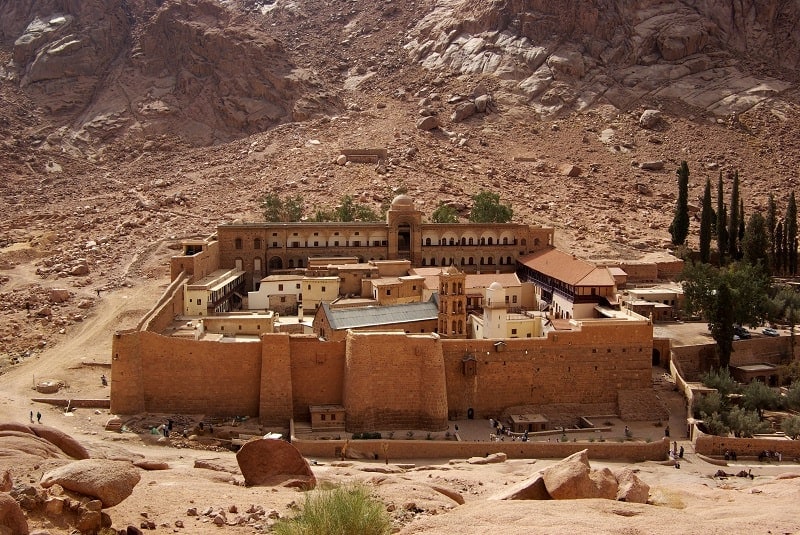 photo source: Wikimedia Commons
photo source: Wikimedia Commons
The library at Saint Catherine’s Monastery located at the foot of the legendary Mount Sinai, is the oldest continually operating library in the world. The monastery itself is also considered one of the oldest functioning Christian monasteries in the world and it is a UNESCO World Heritage site.
Due to its age and importance in the Christian world, the monastery’s library has the second largest collection of ancient manuscripts and codices, just after Vatican City.
The library houses several unique and important texts, including the Syriac Sinaiticus and, until 1859, the Codex Sinaiticus, the oldest known complete Bible dating back to around 345 CE. A few years ago, the UCLA (University of California, Los Angeles) Library began reproducing digital copies of about 1,100 unique Syriac and Arabic manuscripts from Saint Catherine’s Monastery.
7. Imperial Library of Constantinople
Year Created: c.337 – 361 CE
Location: Constantinople, Byzantine Empire (modern-day Turkey)
Still in Operation: No – it was destroyed in 1204 CE

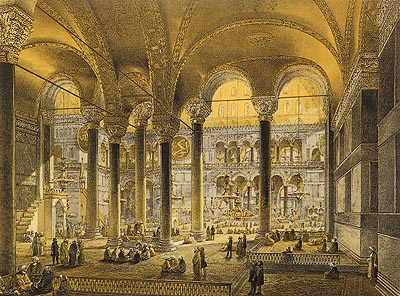 photo source: toptenz.net
photo source: toptenz.net
The Imperial Library of Constantinople of the Byzantine Empire was the last great library of the ancient world. It was founded by Constantius II sometime during his reign between 337 – 361 CE. He established the library to preserve the surviving works of Greek literature and the library even contained the remnants of the Library of Alexandria.
After Constantius II, Emperor Valens hired four Greek and three Latin calligraphers to make copies of the Greek works onto parchment, which lasted longer than papyrus. Nearly all of the Greek classics known today are from the Byzantine copies from the Imperial Library of Constantinople.
The library was partially destroyed by several fires and thousands of volumes were lost. However, some of them were saved and recopied. After the fall of Constantinople in 1204 CE, a formal imperial library was no longer maintained, but some texts have survived and were recovered in later centuries.
6. Theological Library of Caesarea Maritima
Year Created: late 3rd century CE
Location: Caesarea, Israel
Still in Operation: No
 photo source: Wikimedia Commons
photo source: Wikimedia Commons
The Theological Library of Caesarea Maritima was the largest ecclesiastical library of the time, containing more than 30,000 Christian manuscripts. Origen of Alexandria — a Hellenistic scholar, ascetic, and early Christian theologian — and the scholarly presbyter Pamphilus of Caesarea, who were both avid collectors of Christian books were the main patrons of the library and helped it to achieve its large collection.
The Theological Library was so famous that several Christian scholars from other parts of the world came to study there, including Gregory Nazianzus, Basil the Great, and Jerome. Several priceless works were lost after the library declined in the mid-7th century CE. Some of the library’s treasures included the Gospel according to the Hebrews and Origen’s personal copy of the Hexapla, which was a critical edition of the Hebrew Bible.
5. Library of Pergamum
Year Created: c.197 BCE
Location: Pergamum, Turkey (modern-day Bergama)
Still in Operation: No
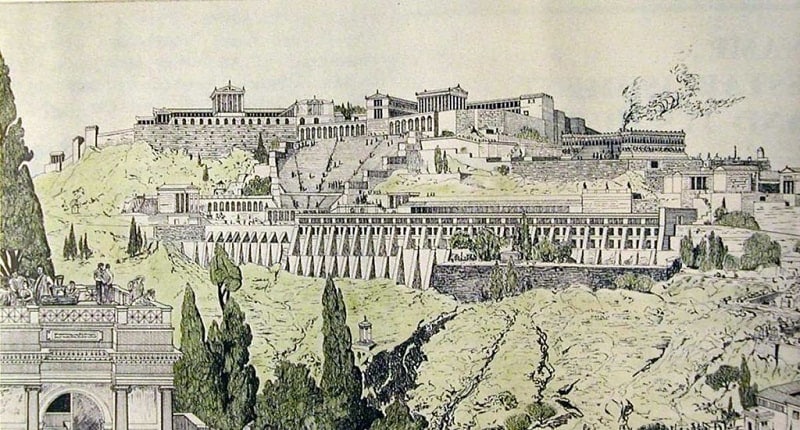 photo source: Wikimedia Commons
photo source: Wikimedia Commons
The ancient Greek city of Pergamum (also called Pergamon) was an important cultural center of the ancient world, only rivaled by Alexandria and Antioch. Like Alexandria, Pergamum was home to a large library, which was second best in ancient Greece after the Library of Alexandria.
According to the writings of Plutarch, the Library of Pergamum housed about 200,000 volumes. Unfortunately, no index or catalog of the library’s works exist today, so no one knows for sure how large the library’s collection was.
A distinguished citizen of the city and wife of a town Councillor, Flava Melitene, is largely responsible for supplying the library. She also presented a statue of the Roman Emperor Hadrian to the library as a gift.
According to legend, the city claims that it invented parchment and the word parchment actually comes from a corruption of the word pergamenos, meaning “from Pergamon”. However, this was just a myth (parchment had been in use in Anatolia long before Pergamum was established) as the city became known for producing parchment and storing its manuscripts on parchment instead of papyrus, which was monopolized by Alexandria.
4. Library of Alexandria
Year Created: 3rd century BCE
Location: Alexandria, Egypt
Still in Operation: No – it was destroyed
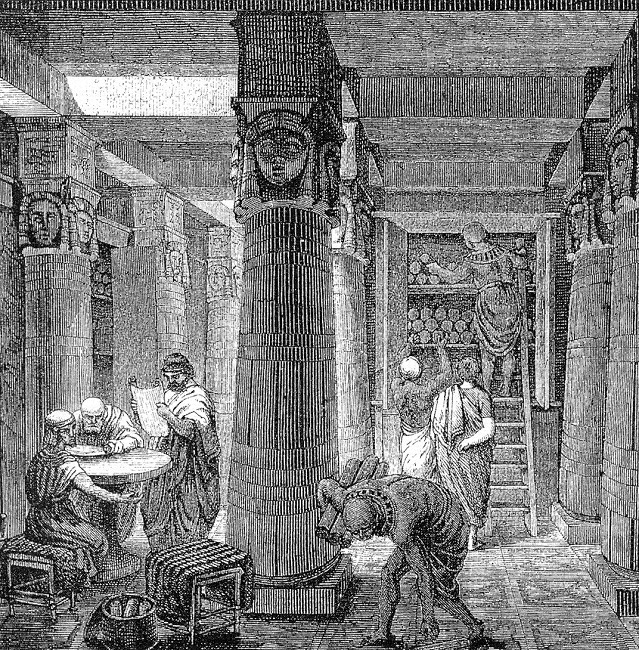 photo source: Wikimedia Commons
photo source: Wikimedia Commons
The Library of Alexandria is the best-known and largest libraries of the ancient world. It was located in the city of Alexandria in ancient Egypt, which was the major economic, cultural, and intellectual center of the world at the time.
Alexander the Great, who is believed to have founded Alexandria, got the inspiration for his own grand library after visiting the Royal Library of Ashurbanipal. He wanted to collect the works of the people he conquered, convert them to Greek, and store them in a library of his own.
While Alexander the Great did not live long enough to see his dream come true, Ptolemy, who was one of his generals, began constructing the library around the 3rd century. The Library of Alexandria is famous for collecting all of the world’s knowledge at the time, translating the works onto papyrus scrolls, and storing them.
The library flourished until the Roman conquest of Egypt in 30 BCE and it was burned down and thousands of scrolls were lost.
3. Royal Library of Ashurbanipal
Year Created: c.668 BCE
Location: ancient Nineveh, the capital of Assyria (near modern-day Mosul, Iraq)
Still in Operation: No – in ruins, but over 30,000 clay tablets and fragments have survived
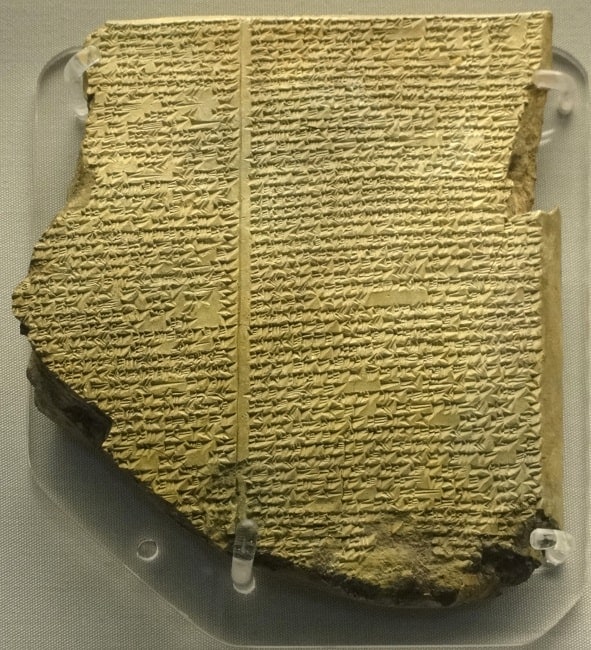 photo source: Wikimedia Commons
photo source: Wikimedia Commons
Before the discovery of older ancient libraries in the early 20th century, the Royal Library of Ashurbanipal was considered the first library or the oldest surviving royal library in the world. While we now know that older libraries exist, it was one of the first to implement a systematical organization of its material. The library was named for Ashurbanipal, the last great king of the Neo-Assyrian Empire.
When his empire had stabilized, Ashurbanipal built his royal library and filled it with texts covering a wide array of subjects, including medicine, mythology, magic, science, poetry and geography. The most famous text — that has mostly survived intact — from Ashurbanipal is the Epic of Gilgamesh. This tablet is regarded as the earliest surviving great work of literature.
2. Ugarit Library
Year Created: c.1400 – 1200 BCE
Location: Northern Syria
Still in Operation: No – in ruins, but thousands of clay tablets and fragments have survived
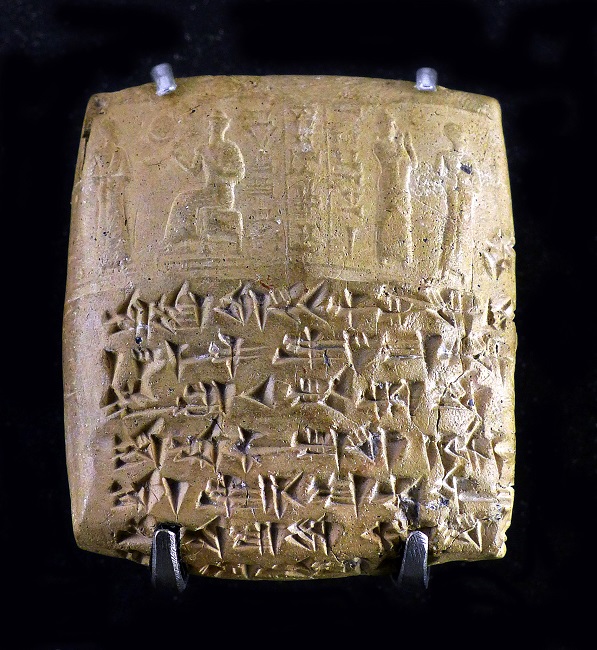 photo source: Wikimedia Commons
photo source: Wikimedia Commons
When the Ugarit archives were discovered in 1929, archaeologists found more than one library. The thousands of clay tablets they uncovered revealed a palace library, a temple library, and two private libraries, one belonging to a diplomat named Rapanu. The two private libraries were unique in the world at the time and may have been some of the first libraries made for private, personal use.
The libraries contained diplomatic, legal, economic, administrative, scholastic, literary, and religious texts. At least seven different scripts were used in Ugarit, including Egyptian and Luwian hieroglyphs, and Cypro-Minoan, Sumerian, Akkadian, Hurrian, and Ugaritic cuneiform.
The city’s scribes developed the Ugaritic alphabet around 1400 BCE, which consisted of 30 letters, each corresponding to sounds. Although the letters were similar to other cuneiform signs, they were unique and the Ugaritic alphabet is considered to be the first alphabet in history.
1. Ebla Library
Year Created: c.2500 – 2250 BCE
Location: near Mardikh, Syria
Still in Operation: No – in ruins, but about 2,000 complete clay tablets and 4,700 tablet fragments have survived
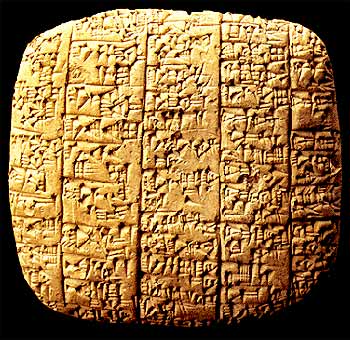 photo source: Wikimedia Commons
photo source: Wikimedia Commons
The Royal Library of the ancient Kingdom of Ebla is thought to be the oldest library in the world. The library was discovered in the years 1974 – 1976 by Italian archaeologists from the University of Rome La Sapienza. They found about 2,000 complete tablets ranging in size from 1 in to over a foot, 4,000 tablet fragments, and over 10,000 chips and small fragments. This collection of texts is the largest ever found from the 3rd millennium BCE.
Unlike other ancient archives, there is evidence that suggests the tablets from the Ebla library were purposely arranged and even classified. The larger tablets were originally stored on shelves, but fell over when the palace was destroyed. Archaeologists were able to reconstruct the tablets’ original positions and discovered that they had been arranged by subject.
Additionally, the tablets show evidence of the early transcription of texts into foreign languages and scripts, classification and cataloging for easier retrieval, and arrangement by size, form and content.
OTHER POSTS YOU MAY BE INTERESTED IN
6 Oldest Bookstores In The World
8 Oldest Books that Ever Existed
10 Oldest Written Languages in The World
11 Public Libraries Invaluable to World History
10 Largest Libraries in the World
Spread the love















![Toni Kroos là ai? [ sự thật về tiểu sử đầy đủ Toni Kroos ]](https://evbn.org/wp-content/uploads/New-Project-6635-1671934592.jpg)


